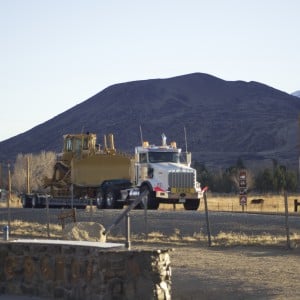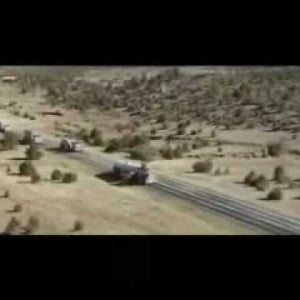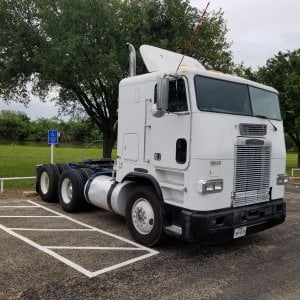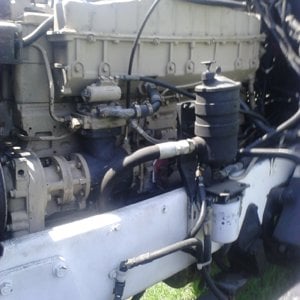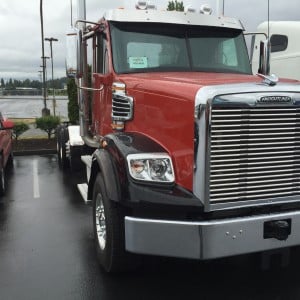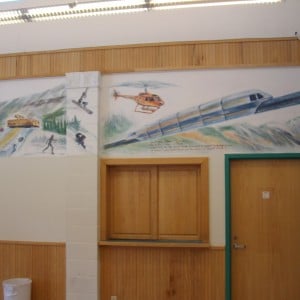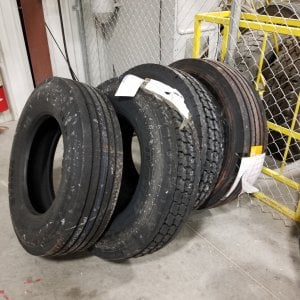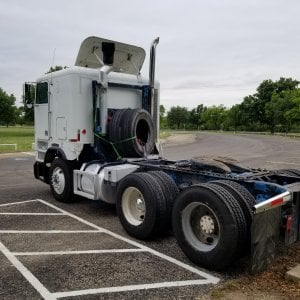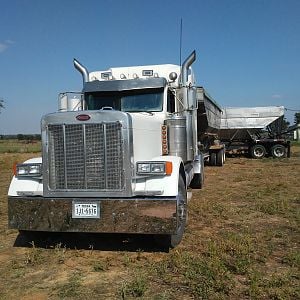Sam McCloud
Well-Known Member
What I've learned so far about gear selection for a downgrade is that it should be the gear that puts the truck's engine just under governed speed at control speed. I suspect governed speed information as well as gear ratio information should be in the truck's operator guide.
Generally, a truck will be in the same gear going down the hill as it climbed up it if the truck is old or a gear or two lower than the climbing gear if the truck is modern.
However, there will times that road goes from a stretch of flat and level (no slope) to a downgrade and there is no uphill climb to determine your gear selection for going over the summit.
Let's say you are in a tractor-trailer with one trailer on a level highway at 80,000 pounds and this highway is a speed zone of 55 mph and you are cruising at this speed. Your transmission is at its normal gear range for this driving condition. You see a sign indicating there is a 5% downgrade ahead, road conditions are dry, it's broad daylight and weather is clear.
What should you now do? How will you calculate your correct CONTROL SPEED for this upcoming downhill run? Which gear will you select?
Lets' change 5% to 10% downgrade in the scenario above, what is your correct control speed now?
Keeping that 10% downgrade, let's change road conditions from dry to wet, what is your control speed now?
Now let's change road conditions from wet to packed snow, what is your control speed now?
Let's now change your fully-loaded truck to an empty truck, what is your control speed now?
Now let's even change your truck from a single to a double, now what should your control speed be?
What is the mathematical formula in mountain driving for determining control speed based upon:
A driver will use the the snubbing 5-3 braking method on top of engine braking to maintain control speed downhill.
Engine braking will never be used under slippery road conditions to avoid skids.
Generally, a truck will be in the same gear going down the hill as it climbed up it if the truck is old or a gear or two lower than the climbing gear if the truck is modern.
However, there will times that road goes from a stretch of flat and level (no slope) to a downgrade and there is no uphill climb to determine your gear selection for going over the summit.
Let's say you are in a tractor-trailer with one trailer on a level highway at 80,000 pounds and this highway is a speed zone of 55 mph and you are cruising at this speed. Your transmission is at its normal gear range for this driving condition. You see a sign indicating there is a 5% downgrade ahead, road conditions are dry, it's broad daylight and weather is clear.
What should you now do? How will you calculate your correct CONTROL SPEED for this upcoming downhill run? Which gear will you select?
Lets' change 5% to 10% downgrade in the scenario above, what is your correct control speed now?
Keeping that 10% downgrade, let's change road conditions from dry to wet, what is your control speed now?
Now let's change road conditions from wet to packed snow, what is your control speed now?
Let's now change your fully-loaded truck to an empty truck, what is your control speed now?
Now let's even change your truck from a single to a double, now what should your control speed be?
What is the mathematical formula in mountain driving for determining control speed based upon:
- load
- transmission type and governed engine speed
- vehicle age and design
- number of trailers/vehicle composition
- visibility
- posted speeds
- grade
- road conditions
- traffic
- weather
A driver will use the the snubbing 5-3 braking method on top of engine braking to maintain control speed downhill.
Engine braking will never be used under slippery road conditions to avoid skids.
Last edited by a moderator:




